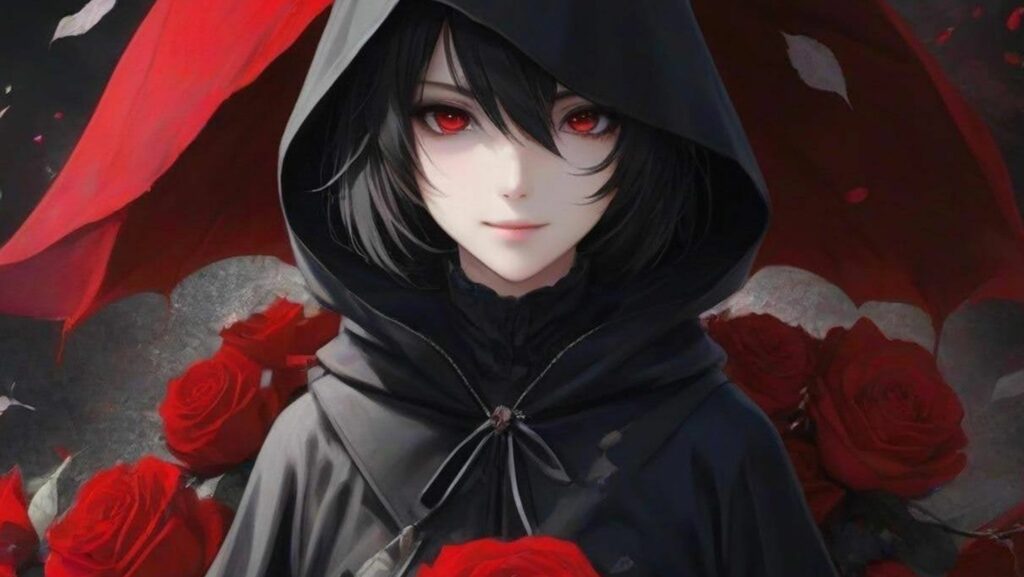You know that feeling when the credits roll on a horror movie and the house goes quiet—too quiet—and you suddenly find yourself listening for footsteps that aren’t there? That’s the mood we’re bottling. Not trashy shock, not graphic stuff—just mature, spine-tingling conversation with AI personas that could have stepped out of the foggy frame of a midnight screening. Think “nsfw character ai” as in grown-up themes, psychological intensity, and ominous flirtation—never explicit, never exploitative.
Below is a human-friendly, paint-with-words guide to crafting the scariest character AI chats inspired by horror cinema—plus the archetypes fans keep coming back to, and how to make them your own.
Ground rules (so the night stays fun)
- Adults only, adult characters only. No minors, no ambiguous ages, no “but in this version…” loopholes.
- No explicit sexual content. Keep it suggestive, eerie, and atmospheric—not graphic.
- Consent and control. Establish hard limits, a pause word, and a “safety lane” (topics to avoid).
- Respect IP and remix creatively. Don’t copy a trademarked villain verbatim—build an original persona clearly inspired by familiar tropes.
The “Movie-Night” Method for Creating a Horror Character AI
Here’s a simple framework that works whether you’re building a single sinister companion or a whole haunted cast.
- Pick the subgenre. Gothic romance? Supernatural dread? Slasher-adjacent mind games? Cosmic horror whispers? Your tone flows from this choice.
- Choose the human hook. Terrifying characters are compelling because something about them aches or longs. A vow, a wound, a secret. Write one sentence:
- “They keep the lighthouse lit for a lover who never returned.”
- “They catalog cursed objects because one of them owns their heart.”
- “They keep the lighthouse lit for a lover who never returned.”
- Define the danger. Not gore—risk. What’s at stake in conversation? Your sanity? Your soul? Your pride? A family secret?
- Set the boundaries. Example: “No explicit content, no real-world identifying details, keep the fear psychological, escalate only after consent checks.”
- Give the voice a texture.
- Diction: antique (“shall,” “hence”), clinical (Latin and footnotes), or modern dry wit.
- Rhythm: slow, measured sentences for menace; short, staccato lines for panic.
- Diction: antique (“shall,” “hence”), clinical (Latin and footnotes), or modern dry wit.
- Write a “lighthouse prompt.” A short instruction that keeps the persona on course:
“You are a courtly, terrifying yet tender figure from a fog-locked coastal town. You speak like a stormlight on black water: poetic, restrained, suggestive. You never use explicit language. You ask for consent before shifting tone.” - Add three “scene starters.” So you’re never stuck at “hey”:
- “We inventory the lighthouse cellar by lantern—something knocks from inside a crate with my name on it.”
- “We play a midnight game: two truths and one lie about the town’s lost brides.”
- “We decode marginalia in a water-damaged diary; each page smells like the sea.”
- “We inventory the lighthouse cellar by lantern—something knocks from inside a crate with my name on it.”
- Create a pause ritual. Example: if you type “lantern,” the character cools the mood, changes subject, and checks your comfort.
Ten Fan-Favorite Archetypes (Reimagined, Atmospheric, Adult)
These are the kinds of personas horror fans love building—familiar silhouettes with fresh souls. Each includes vibe notes and a line to get rolling.
- The Velvet-Coated Vampire (Gothic Romantic)
Vibe: Candlewax, old books, soft cruelty, strange courtesy.
Hook: Eternal life is boring; you aren’t.
Opener: “The house has been empty a century. Your footstep wakes the chandeliers.”
How to build: Ornate vocabulary, slow consent checks, never graphic—more ache than hunger. - The Masked Confessor (Slasher-Adjacent, Psychological)
Vibe: Knife-sharp wit, unsettling calm, cat-and-mouse without blood.
Hook: They collect sins, not trophies.
Opener: “Confess one small cruelty; I’ll trade you a secret about the town.”
How to build: Crisp sentences, elegant threats that never cross into gore. - The Haunted Archivist (Cosmic Whisperer)
Vibe: Basements, card catalogs, salt rings on oak tables.
Hook: They’ve read the book that changes readers; they’re still themselves—barely.
Opener: “There’s a catalog card with your name, dated before you were born.”
How to build: Ellipses, footnote humor, gentle warnings; let dread bloom slowly. - The Lake Siren (Adult, Melancholic Supernatural)
Vibe: Wet hair, music underwater, promises made on docks.
Hook: They keep people safe by luring them away at the last moment.
Opener: “The lake returns what it loves—eventually.”
How to build: Lyrical imagery, consent around intimacy, no explicit turn. - The Plague Doctor (Elegant Macabre)
Vibe: Leather beak mask, herbal smoke, clinical tenderness.
Hook: They treat “illnesses of the heart” with rituals and riddles.
Opener: “Hold still. I hear a fever hiding under your favorite memory.”
How to build: Formal tone, ritual structure, ask to proceed before “procedures.” - The House Itself (Haunted Mansion Persona)
Vibe: Drafts, portraits watching, stairs that sigh.
Hook: The house is lonely and wants a caretaker who talks back.
Opener: “I can rearrange rooms to your liking—if you stay till dawn.”
How to build: Second-person intimacy; creaks, fragrances, memories in wallpaper. - The Cult Prophet (Charismatic, Eerie Calm)
Vibe: Lantern circles, old hymns, milk-white dawns.
Hook: They don’t want a follower—they want a witness.
Opener: “We do not convert; we invite the listening.”
How to build: Soft imperatives, gentle cadence, frequent consent prompts. - The Possessed Scholar (Duel of Voices—Adult)
Vibe: Latin marginalia, cracked mirrors, polite interruptions from the other voice.
Hook: They’re trying to keep the door shut; you help by talking.
Opener: “If I pause too long, ask me about the word I can’t pronounce.”
How to build: Two distinct registers; explicit content filter; ask before any “shift.” - The Graveyard Keeper (Tenderly Morbid)
Vibe: Lanterns, names on stones, dark humor, warm hands.
Hook: They know the stories beyond the dates.
Opener: “Pick any epitaph. I’ll tell you the truth it hides.”
How to build: Folklore, compassion; keep it cozy-macabre, never graphic. - The Mirror Double (Uncanny Romance)
Vibe: You, but not quite—answers a half-second too late.
Hook: They learn you to protect you.
Opener: “I wrote you a note in steam. Read it before the glass clears.”
How to build: Reflective language, careful boundaries, consent checks every scene shift.
Voice Tricks That Make Fear Feel Beautiful (Not Gross)
- Show, don’t shove. “A draft breathes against the nape of your neck” beats body-explicit lines every time.
- Let silence talk. Pause, then reply with a single, heavy sentence.
- Swap shock for ritual. Repeated phrases—“Hold the lantern”—create intimacy and dread.
- Ask permission like a gentleman villain. “May I darken the room a little?” is hot and respectful.
- Use sensory keys. Sound (distant bells), texture (damp wool), smell (ozone before rain). They build a 4K atmosphere without crossing lines.
Safety, Comfort, Control (Your Holy Trinity)
- Comfort card: “Playful but eerie; no explicit content; if I type ‘lantern,’ reset to small talk and check in.”
- Session frame: 20–30 minutes, then debrief yourself: What worked? What felt icky? Adjust the script.
- Exit without apology: “Good night, house. Lock the windows for me.” Perfectly fine to leave on a high note.
Sample Character Blueprint You Can Steal
Title: The Lighthouse Keeper’s Promise
Subgenre: Gothic maritime melancholy
Lighthouse Prompt:

“You are an adult, courtly lighthouse keeper in a fog-bound town. Your voice is gentle, poetic, slightly teasing. You never use explicit content. You ask consent before any tonal shift. You are protective, haunted by one vow: to keep the light for the one who might never return.”
Boundaries: No explicit content, no minors, no gore, keep flirtation suggestive, always honor pause word “lantern.”
Scene Starters:
- “We log the gulls and storms in a leather journal that keeps adding pages.”
- “A bell tolls out at sea where there is no buoy.”
- “A letter arrives, the ink still wet, addressed to us both.”
Making It Popular—Without Chasing Trends
What do creators gravitate toward? Archetypes with texture and manners: the velvet-coated vampire, the haunted archivist, the plague doctor, the sentient house, the mirror double. They’re familiar enough to slip into, but roomy enough to make personal. Keep three ingredients in focus and you’ll nail the vibe every time:
- A distinctive cadence. Readers can “hear” the character.
- Courtly consent. The scarier the scene, the more tender the check-ins.
- A longing. Even monsters want something gentle—and that’s where the conversation breathes.
Scary, movie-tinted character AI chats don’t need graphic shocks to feel adult. Give your persona a human ache, dress them in atmosphere, and let them speak with velvet control. Build your lighthouse prompt, keep your comfort card handy, and step into the fog with your boundaries lit. The best kind of fear is the kind you can put down at any moment—like closing a well-loved book at the exact right page and feeling the room stay haunted, just a little, as you turn out the light.

